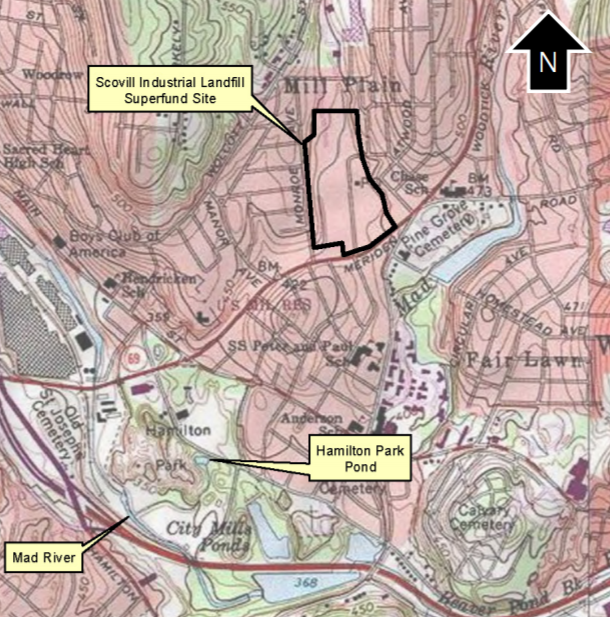Decades after being identified as a Superfund Site by the EPA, the Scovill Industrial Landfill in Waterbury is about to be cleaned up. Waterbury Mayor Neil O’Leary, who serves on EPA’s Local Government Advisory Committee, is delighted at the development.
“EPA’s announcement of infrastructure funding to kickstart the Scovill Landfill cleanup is welcomed news for the residents of Waterbury,” O’Leary said. “This infusion of money will kick start the superfund cleanup, bring local jobs to our community, and continue our work to cleanup, and redevelop contaminated property across our city.”
The U.S. Environmental Protection Agency (EPA) announced today a $1 billion investment from the Bipartisan Infrastructure Law to initiate cleanup and clear the backlog of 49 previously unfunded Superfund sites across the nation, including the Scovill Industrial Landfill. Until this historic investment, this site was a part of a backlog of hazardous waste sites awaiting funding. Thousands of contaminated sites exist nationally due to hazardous waste being dumped, left out in the open, or otherwise improperly managed. These sites include manufacturing facilities, processing plants, landfills and mining sites.
U.S. Congresswoman Jahana Hayes said, “Having grown up in this city, I have a true appreciation for how these toxic sites effect the health and safety of our communities. This funding through the EPA will help eliminate hazardous industrial waste from the 25-acre landfill. Congress worked hard to deliver this historic package to fund crucial projects like this, and I look forward to seeing the continued impact of this legislation in Connecticut.”
The Scovill Industrial Landfill Site, added to the National Priorities List (NPL) in 2000, has been awaiting funding to complete the cleanup at the site since 2017. The site is a 25-acre property located in Waterbury. The southern, 18-acre portion of the site consists of developed residential and commercial properties. The site’s northern portion, which is approximately seven acres, is undeveloped and referred to as the “Calabrese parcel.”
The Scovill Manufacturing Company used the site from 1919 to the mid-1970s for disposal of ash, cinders, demolition debris and other wastes. In 1988, the Calabrese parcel was in the initial stages of development for a senior housing complex when industrial wastes were encountered. The development project was ordered to stop by the State until the extent and degree of contamination was identified. Contaminants identified and attributed to past site operations include: polynuclear aromatic hydrocarbons, polychlorinated biphenyls (PCBs), metals and volatile organic compounds (VOCs).
EPA has selected and designed a comprehensive cleanup remedy for the site, but the work to implement the cleanup still needs to be done. Future work at the site will include construction of a soil cap at the Calabrese parcel; excavation (to the groundwater table) and consolidation of soil under the new cap; and wetlands replication.

